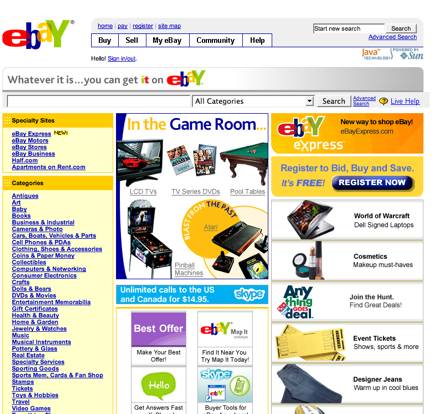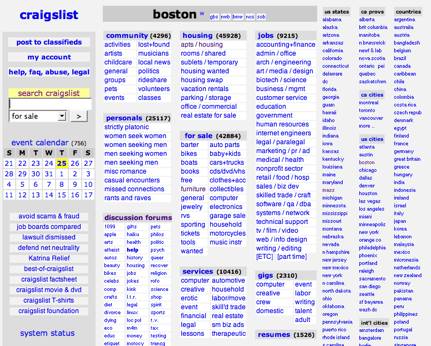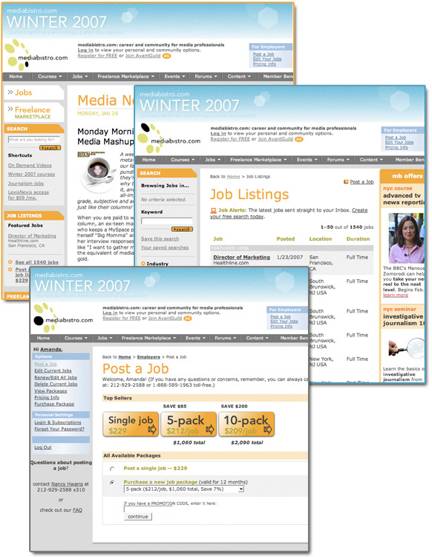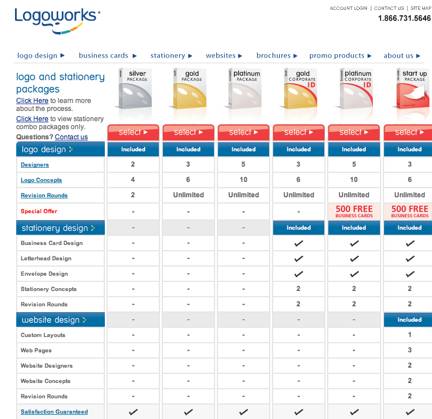Classified websites generate revenue by facilitating commercial transactions between buyers and sellers of products or services. There are at least four major variations of the Classified Website Archetype; Classified Retail Websites, Classified Directory Websites, Classified Employment Websites and Classified Service Websites, all of which we will discuss in this chapter.
The user goals when visiting a Classified Website include: find a product or offer that meets their immediate need, discern whether the offer meets their need at an acceptable price, complete the transaction and ensure its successful delivery.
Classified websites generate revenue from listings fees and commissions for facilitating transactions between parties.

Key Concepts
Business Goals: Generate revenue by facilitating commercial transactions between buyers and sellers of products or services. There are at least four major variations of the Classified Website Archetype:
- Classified Retail Websites such as eBay where transactions are completed in the system
- Classified Directory Websites where buyers respond to listings outside the system
- Classified Employment Websites where employers and employees search for each other and relationships are established outside the system
- Classified Service Websites where employers find and interact with contractors using the system
User Goals: The user has three goals when visiting a Classified Website:
- Find a product or offer that meets their immediate need.
- Discern whether the offer meets their need at an acceptable price.
- Complete the transaction and ensure its successful delivery.
Revenue: Classified Websites generate revenue from listings fees and commissions for facilitating transactions between parties.
Content: While Classified Website publishers produce the framework and reference content for the website, most on-going content is user-generated in the form of product and service listings.
Navigation: Users navigate Classified Websites by browsing content in categories set during the content generation process. The content upload interface most often includes a handful of pull-down menus of checkboxes that force the listing user to provide meta-tags that will be used to both categorize and search optimize the listing data.
Classified sites all facilitate transactions between a buyer and a seller, but they can be further segmented by type. In this chapter, we’ve profiled eBay, a retail classified site, and Craigslist, a directory style classified website, as well as MediaBistro.com, an employment and training website, and finally, LogoWorks, a UK-based logo design services site that uses a B2B Classified Directory Website to facilitate interaction between clients and designers (for a fee).
eBay
Classified Retail Website

eBay’s main strength, according to its founder, software engineer Pierre Omidyar, is that its system is able to adapt to user needs without heavy intervention from a central authority. “Back in 1995, when I launched eBay,” Omidyar explains, “eBay wasn’t my business. It was my hobby. I had to build a system that was self-sustaining.” In fact, Omidyar wanted to create a marketplace in which every individual—not just corporations—had equal power and equal access to information. Therefore, building a vibrant community—or, as he puts it, “an organic, evolving, self-organizing web of individual relationships, formed around shared interests”—was a crucial element.
eBay, which has been profitable since launch, has evolved into the most valuable e-commerce franchise in the world. It provides unparalleled selection and value for buyers and, at the same time, a cost-effective way for sellers to reach millions of shoppers. Over the years, numerous services have been added—and continue to be added—to enhance the trading experience. Today, people spend more time on eBay than on any other site, making it the most popular shopping destination on the Internet. And in terms of revenue growth, eBay is the fastest-growing company of all time.
With annualized revenues approaching $6 billion and 20 percent operating margins, eBay is a dot com blue chip. In 2006, eBay experienced domestic traffic growth of 20 percent with unique visitors growing from 67 to 82 million. With almost 71 million pages of content and 31 million inbound links, eBay continues to grow at a steady pace driven by user generated content (UGC) and our insatiable need to buy and sell all manner of stuff.
Craigslist
Classified Directory Website
Craigslist was a simple community classified site started in 1995 by Craig Newmark (yes, Virginia, there is a Craig). The original non-profit site was incorporated in 1999. There are 190 versions of the website—localized by city—throughout the world, featuring free classified advertisements (jobs, housing, for sale, services, personals, gigs and community) and forums.

Although Jim Buckmaster was brought in as CEO in 2000, Craig has kept the titles of Founder, Chairman and Customer Service Representative. Having the company founder list “Customer Service Representative” among his titles would seem like a cheesy bit of PR, but in this case there is enough evidence to support the truth of the intent. Craig has kept his “service mission and non-corporate culture” values central to how he runs the company.
This touchy-feely community site has had some serious business success. Craigslist has more than 10 million users and eight million classified ads each month. While there are no public revenue numbers, given the simple business model, we can make a reasonable estimate. The site accepts paid listings for job postings from NY and LA ($25), and SF ($75). With about 1000 listings per workday, multiplying out for 260 workdays per year, revenues for 2006 should be at least $33 million.
Compete shows that total unique U.S. visitors almost doubled during 2006 from 9 to 16 million per month. The site includes more than 30 million pages of content and almost one million inbound links.
Media Bistro
Classified Employment Website
Laurel Touby started MediaBistro.com in 1997 in the dot-com heyday with the goal of creating a community for journalists. “We weren’t really sure how we were going to make money,” she confesses, “we just wanted to bring media people together.” While this may not sound like an auspicious mission for a profitable business, MediaBistro.com has developed some very profitable income streams, all of which flow from this community, and all of which provide content models easily adopted by traditional publishers.

MediaBistro.com’s largest source of revenue is its media job listings, access to which is free to registered visitors. The site currently features some 1,100 job openings, which cost employers $229 each to list for 30 days. (Satisfaction is guaranteed—if you aren’t happy with the response you get, you don’t have to pay for it.) Do the math: Bistro’s job listing operation has got to be pulling down more than $3 million a year. The whole listing and payment process is automated, so expenses, aside from developing and maintaining the job listing function, must be minimal.
MediaBistro.com continues to grow with unique website visitors up 83 percent for 2006 ending the year at 198,198 according to Compete. The B2B Website Network includes more than 139,000 pages of content and more than 584,000 inbound links (Yahoo! Site Explorer).
Logoworks
Classified Service Website
Logowork’s mission is to make small businesses look great by providing graphic design services that inspire and enable them to emotionally connect with their customers. They do this for a fraction of the fee charged by freelance designers by allowing designers to design and by prompting clients to complete a very specific set of logo design requirements and feedback using a self-service, website interface. Over 45,000 clients have chosen Logoworks to design their logo.

Logoworks claims a 98 percent satisfaction rate from customers spanning 70 countries.
The website averaged between 31,000 and 68,000 unique U.S. visitors during 2006—impressive, considering the organization is UK-based. The website’s more than 1,300 pages of content have drawn more than 15,000 inbound links.
This article was written by Don Nicholas with the help of Peter A. Schaible. It is only one part of a series on Internet Business Models. See below for the rest of this series:



After going over a number of the articles on your site, I seriously like your
technique of blogging. I book-marked it to my bookmark webpage list
and will be checking back in the near future.
Take a look at my web site too and tell me
what you think.
This post is in fact a fastidious one it assists new net users, who are wishing in favor of blogging.
Thank you a bunch for sharing this with all people
you actually know what you are talking approximately! Bookmarked.
Kindly additionally seek advice from my web site =).
We can have a hyperlink change contract between us